Interior Design
7 Ways Interior Designers Can Provide a Sustainable Service
Check out this professional round-up of useful tips to ensure you can offer clients a sustainable home renovation
Are you keen to reduce waste during and after the completion of a project and help your clients maintain an environmentally friendly interior? We’ve put together some of the valuable advice we’ve gleaned from recent design fairs from around the world to give you some useful, doable tips for carrying out a sustainable renovation project.
2. Check certification
A way to ensure accuracy when specifying sustainable products and materials is by looking out for certification. As well as verifications such as the well-known FSC certification for wood, a good example is an initiative called B Corps, which includes businesses that meet its high social and environmental criteria.
When it comes to certification, however, it’s important to do your research. Check out the criteria and validity of a particular certificate before you go ahead with specifying, and make sure you use it as just part of your toolbox.
“There’s a plethora of labels out there. They’re a good starting point as a guide, but, for us, having a conversation with a supplier is very valuable,” Nicola Keenan of Boxx Creative told a panel at 2020’s Decorex Virtual UK trade fair. “It’s only when you speak to them that you can really drill down and understand. Also, discussing whether someone is not quite there but has plans for the future is something I’m hugely supportive of.”
A way to ensure accuracy when specifying sustainable products and materials is by looking out for certification. As well as verifications such as the well-known FSC certification for wood, a good example is an initiative called B Corps, which includes businesses that meet its high social and environmental criteria.
When it comes to certification, however, it’s important to do your research. Check out the criteria and validity of a particular certificate before you go ahead with specifying, and make sure you use it as just part of your toolbox.
“There’s a plethora of labels out there. They’re a good starting point as a guide, but, for us, having a conversation with a supplier is very valuable,” Nicola Keenan of Boxx Creative told a panel at 2020’s Decorex Virtual UK trade fair. “It’s only when you speak to them that you can really drill down and understand. Also, discussing whether someone is not quite there but has plans for the future is something I’m hugely supportive of.”
3. Work with your suppliers to promote sustainability
It’s worth investing your time in discovering the providence of products and materials. Ask your suppliers questions such as whether they know where the product came from, whether they made it themselves or, if they outsource, how much control they have over that process.
If a supplier isn’t quite at the stage where they can declare their processes completely sustainable, it makes sense to work alongside them and encourage their journey.
“When we realised we wanted to work with suppliers who are in line with our values, we met all of them to ask them questions,” said Nicola Lindsell of Boxx Creative at 2020’s Decorex Virtual show. “You realise you open a can of worms, but it was a really good process and often suppliers were keen to know more.”
It’s worth investing your time in discovering the providence of products and materials. Ask your suppliers questions such as whether they know where the product came from, whether they made it themselves or, if they outsource, how much control they have over that process.
If a supplier isn’t quite at the stage where they can declare their processes completely sustainable, it makes sense to work alongside them and encourage their journey.
“When we realised we wanted to work with suppliers who are in line with our values, we met all of them to ask them questions,” said Nicola Lindsell of Boxx Creative at 2020’s Decorex Virtual show. “You realise you open a can of worms, but it was a really good process and often suppliers were keen to know more.”
4. Reuse and reclaim
When beginning a project, avoid the temptation to throw everything out and start afresh. Instead, focus on what can be preserved in a home.
This topic was widely discussed at 2021’s Decorex Virtual, where Simone Suss of Studio Suss explained that, ideally, her team has no skips on their projects. When they do decide to discard something, they use avenues such as Freecycle, a recycling initiative in the UK, to avoid old items going into landfill.
When beginning a project, avoid the temptation to throw everything out and start afresh. Instead, focus on what can be preserved in a home.
This topic was widely discussed at 2021’s Decorex Virtual, where Simone Suss of Studio Suss explained that, ideally, her team has no skips on their projects. When they do decide to discard something, they use avenues such as Freecycle, a recycling initiative in the UK, to avoid old items going into landfill.
Incorporating vintage furniture into room schemes adds character to the space, and there are many ways to repurpose an old piece into something completely new. The vanity unit here, for example, has been made from two sets of drawers.
At 2021’s Decorex Virtual, Charu Gandhi of Elicyon gave the example of a project where a client wanted to replace their warm oak floors, doors and skirting boards with a paler material. She convinced them to let her try to whitewash them instead of ripping them out. “It affected the lead time by four weeks,” she said, as it took three attempts to get it right. “But in the end it worked.”
At 2021’s Decorex Virtual, Charu Gandhi of Elicyon gave the example of a project where a client wanted to replace their warm oak floors, doors and skirting boards with a paler material. She convinced them to let her try to whitewash them instead of ripping them out. “It affected the lead time by four weeks,” she said, as it took three attempts to get it right. “But in the end it worked.”
5. Embrace slow interiors
It’s easy for clients to be tempted by trends, but you can use your skill as an interior designer to encourage a more timeless aesthetic. A decorating scheme that’s in line with the client’s tastes, needs and lifestyle will prevent them changing their mind a couple of years down the line.
Try to communicate the value of choosing good-quality products and materials that will look beautiful regardless of trends. As the CEO of Carl Hansen & Son explained at Denmark’s 3 Days of Design, “If, for example, you want to buy new chairs and keep them for many years, ask yourself, ‘If a chair has been comfortable and beautiful and has endured for over 50 years, why wouldn’t it stay like that for the next decades?’”
You can make collaboration with clients easier by using Houzz Pro management software, which allows you to communicate easily and share Mood Boards and 3D floor plans quickly and efficiently.
It’s easy for clients to be tempted by trends, but you can use your skill as an interior designer to encourage a more timeless aesthetic. A decorating scheme that’s in line with the client’s tastes, needs and lifestyle will prevent them changing their mind a couple of years down the line.
Try to communicate the value of choosing good-quality products and materials that will look beautiful regardless of trends. As the CEO of Carl Hansen & Son explained at Denmark’s 3 Days of Design, “If, for example, you want to buy new chairs and keep them for many years, ask yourself, ‘If a chair has been comfortable and beautiful and has endured for over 50 years, why wouldn’t it stay like that for the next decades?’”
You can make collaboration with clients easier by using Houzz Pro management software, which allows you to communicate easily and share Mood Boards and 3D floor plans quickly and efficiently.
6. Design for longevity
Encourage your client to think long-term when it comes to the layout of a space or the products they’re choosing. You can do this by presenting options for hardwearing materials, such as composite benchtops, and also by thinking about how an interior needs to adapt over time.
“If a client has children, I know they’re going to grow up, so I plan ahead,” Henry Prideaux explained at 2021’s Decorex Virtual. So when you’re designing a play area in a kitchen, for example, think about how that could be used later as a homework area or a chill-out zone for teenagers.
“The clients I get are normally retirees, so it’s designing something they love and making it more supportive for them,” Jay Blades said at the same event. He explained how he will raise the legs of an armchair to make it easier for clients to get in and out of it, or add arm covers for extra grip.
Encourage your client to think long-term when it comes to the layout of a space or the products they’re choosing. You can do this by presenting options for hardwearing materials, such as composite benchtops, and also by thinking about how an interior needs to adapt over time.
“If a client has children, I know they’re going to grow up, so I plan ahead,” Henry Prideaux explained at 2021’s Decorex Virtual. So when you’re designing a play area in a kitchen, for example, think about how that could be used later as a homework area or a chill-out zone for teenagers.
“The clients I get are normally retirees, so it’s designing something they love and making it more supportive for them,” Jay Blades said at the same event. He explained how he will raise the legs of an armchair to make it easier for clients to get in and out of it, or add arm covers for extra grip.
7. Help your client be green when they clean
An interesting point made by Bell at 2022’s Surface Design Show in the UK was about cleaning. When specifying a product, she recommends finding out whether it can be cleaned without the use of toxic chemicals.
There are some other ways to ensure easy-clean solutions, such as this tip from Ireland-based architect Eva Byrne of Houseology. “Choose a hob that’s fuss-free and easy to wipe down without needing any exotic lotions or solutions,” she says. “Have a good look at details, such as the knobs on the oven, to make sure there are no hard-to-get-at nooks; knobs that are too close together mean you can’t get a cloth between them, for example.”
In a previously published article about easy-to-clean bathrooms, UK-based designer Josephine Lecouflé-Vinet said, “Don’t put textured porcelain tiles on the floor, especially if there’s a WC in the bathroom, where people tend to walk with their shoes on”.
An interesting point made by Bell at 2022’s Surface Design Show in the UK was about cleaning. When specifying a product, she recommends finding out whether it can be cleaned without the use of toxic chemicals.
There are some other ways to ensure easy-clean solutions, such as this tip from Ireland-based architect Eva Byrne of Houseology. “Choose a hob that’s fuss-free and easy to wipe down without needing any exotic lotions or solutions,” she says. “Have a good look at details, such as the knobs on the oven, to make sure there are no hard-to-get-at nooks; knobs that are too close together mean you can’t get a cloth between them, for example.”
In a previously published article about easy-to-clean bathrooms, UK-based designer Josephine Lecouflé-Vinet said, “Don’t put textured porcelain tiles on the floor, especially if there’s a WC in the bathroom, where people tend to walk with their shoes on”.
Your turn
How do you ensure a sustainable project? Share your ideas in the Comments, like this story, save the images, and join the renovation conversation.
More
Want more from the international stage of design? Read up on 10 Contemporary Lighting Trends for 2022 From New York
How do you ensure a sustainable project? Share your ideas in the Comments, like this story, save the images, and join the renovation conversation.
More
Want more from the international stage of design? Read up on 10 Contemporary Lighting Trends for 2022 From New York




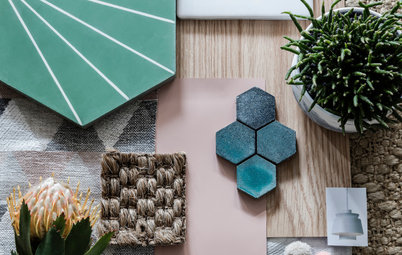
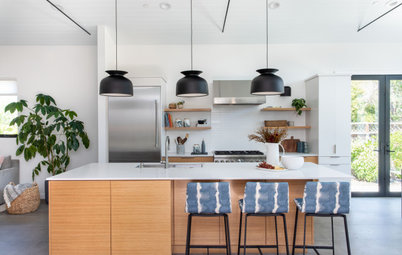
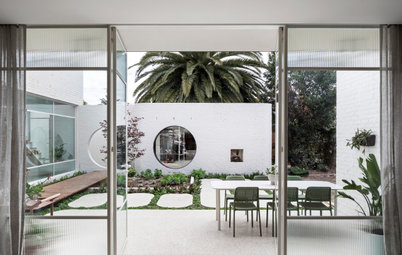
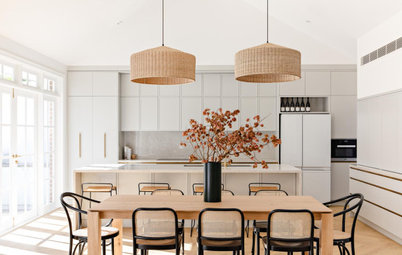
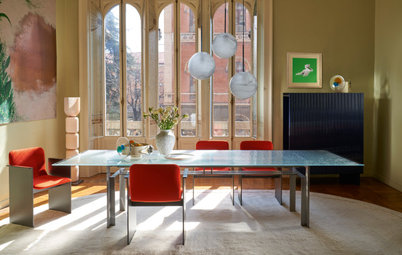
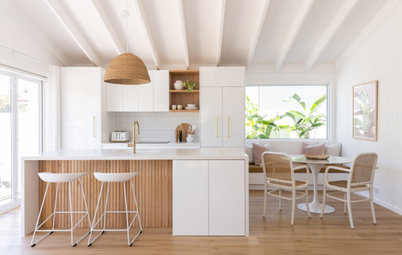

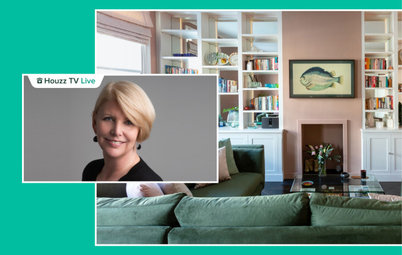
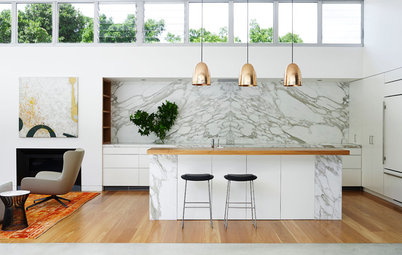
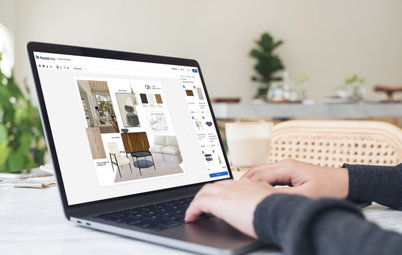

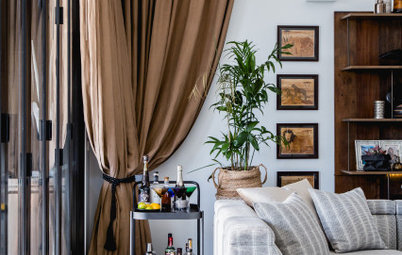
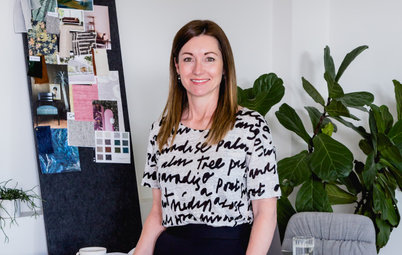
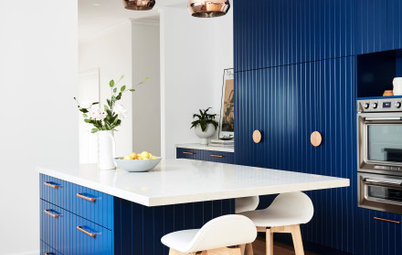
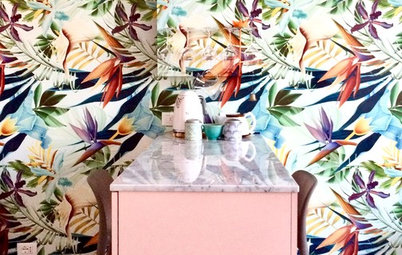
In a talk at 2022’s Surface Design Show in London, UK, Liz Bell of Absolute Project Management informed the audience that 13 percent of products delivered to construction sites are sent directly to landfill without being used (according to the Technology Strategy Board, now called Innovate UK). She encouraged designers to avoid ordering excess materials and products, perhaps thinking about adjusting the design to avoid wastage, and also suggested researching materials that can easily be returned to the supplier.
Another suggestion was to use offcuts from elsewhere in a project. For example, composite kitchen benchtops can be used as a vanity-unit surface in a bathroom, or wooden worktop offcuts can often be repurposed as display shelves.
Bell also highlighted those materials that can break easily when they arrive on-site. She encouraged designers to ask whether delicate items could be avoided in many circumstances.